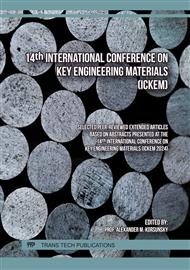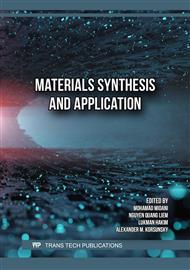p.53
p.75
p.83
p.95
p.113
p.123
p.135
p.145
p.153
The Effect of Combinations of Wall Materials on Encapsulation of Phenolic Contents from Extract of Clitoria ternatea
Abstract:
In our research, we demonstrate an innovative process for preserving polyphenolic compounds in a selected plant extract through a modified encapsulation technique. This can enhance preservation strategies and unlock potential industrial applications. The polyphenolic contents of butterfly pea (Clitoria ternatea) were extracted using the reflux extraction method using distilled water as a solvent. The flower-to-solvent ratio was 1:20 w/v. The total phenolic contents of C. ternatea extract were evaluated. To keep the stability of the phenolic contents in C. ternatea extract, the encapsulates of extract were performed using different combinations of wall material. In preparation for encapsulation, sodium alginate was used as the main wall material, which cooperated with other wall materials including gum arabic, maltodextrin, and casein sodium salt. The encapsulation which was performed using 3.0% w/v of sodium alginate mixed with 1.0% w/v of gum arabic, and C. ternatea extract in 5.0% w/v of CaCl2 solution provided a smooth surface and spherical shape of the particles. However, the optimized condition of encapsulation of C. ternatea extract using the combinations of wall materials which reveal thermal stability and degradation of polyphenolics was performed using 3.0% w/v of sodium alginate mixed with 1.0% w/v of casein sodium salt, and C. ternatea extract in 5.0% w/v of CaCl2 solution. This condition exhibited the highest thermal stability at 205°C and offered the lowest polyphenol contents degradation at 2.76±0.52 gallic acid equivalents/100 mg dried bead. The average particle sizes of encapsulates using the three conditions of 3.0% w/v of sodium alginate mixed with 1.0% w/v of casein sodium salt, gum arabic, and maltodextrin were 1247, 977, and 1210 µm in diameter, respectively. This method would be an alternative way to prevent polyphenolic compound degradation and boost shelf life at high temperatures in many potential applications.
Info:
Periodical:
Pages:
113-120
Citation:
Online since:
August 2024
Authors:
Price:
Сopyright:
© 2024 Trans Tech Publications Ltd. All Rights Reserved
Share:
Citation:



